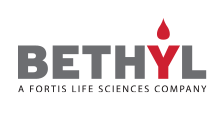Rabbit anti-ZEB1 IHC Antibody

Catalog #
ZEB1
Human
,Mouse
IHC
Rabbit
Polyclonal
Whole IgG
Between 1074 and 1124
IgG
Unconjugated
Antigen Affinity Purified
Product Details
Mouse,
Human
Monkey
Human
2 - 8 °C
1 year from date of receipt
ZEB1 (zinc-finger E-box-binding homeobox 1), also known as TCF8 (transcription factor 8), is a delta-EF1/ZFH-1 C2H2-type zinc finger that bears seven C2H2-type zinc fingers and one homeobox DNA-binding domain. ZEB1 is a transcriptional repressor of interleukin-2 (IL-2). Mutations in the ZEB1 gene are associated with posterior corneal dystrophy type 3 (PPC3) a rare disorder characterized by metaplasia and overgrowth of corneal endothelial cells. ZEB1 appears to be critical to epithelial to mesenchymal transitions (EMT) during development and cancer metastasis. As a transcription factor involved in EMT, ZEB1 promotes EMT by repressing genes associated with the epithelial phenotype and activates genes associated with the mesenchymal phenotype.
Alternate Names
AREB6; BZP; delta-crystallin enhancer binding factor 1; DELTAEF1; FECD6; negative regulator of IL2; NIL2A; NIL-2-A zinc finger protein; posterior polymorphous corneal dystrophy 3; PPCD3; TCF8; TCF-8; Transcription factor 8; transcription factor 8 (represses interleukin 2 expression); ZFHEP; ZFHX1A; zinc finger E-box-binding homeobox 1; zinc finger homeodomain enhancer-binding protein
Applications

